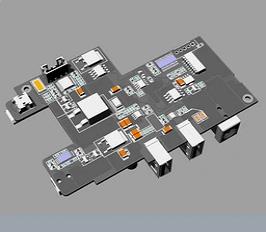Let's face it. People make mistakes, and PCB design engineers are no exception. Contrary to popular perception, as long as you can learn from these mistakes, making mistakes is not a bad thing. The following will briefly summarize some common mistakes in PCB design.
Lack of planning
As the saying goes, "If a person has no plan beforehand, he will find trouble and will come to his door." Of course, this also applies to PCB design. One of the many steps to make PCB design successful is to choose the right tool. Today's PCB design engineers can find many powerful and easy-to-use electronic design automation (EDA) software packages on the market. Each model has its own unique capabilities, advantages and limitations. In addition, it should also be noted that no piece of software is foolproof, so problems such as mismatched component packaging are bound to occur. It is possible that there is no single tool that can meet all needs. Even so, it is necessary to study in advance and try to find the best product that best suits the needs. Some information on the Internet can be used quickly.
Poor communication

Although the practice of outsourcing PCB design to other manufacturers is becoming more and more common and often very cost-effective, this approach may not be suitable for high-complexity PCB design, because in this design, performance and reliability Sex is extremely critical. With the increase in design complexity, in order to ensure accurate component placement and routing in real time, face-to-face communication between engineers and PCB designers has become very important. This face-to-face communication will help save costly and important tasks in the future. Do (rework) work.
It is also important to invite PCB board manufacturers to join in the early stages of the design process. They can provide preliminary feedback on the design, and they can maximize efficiency according to their processes and procedures, which will save considerable time and money in the long run. By letting them know the design goals and inviting them to participate in the early stages of PCB layout, any potential problems can be avoided before the product is put into production and the time to market can be shortened.
Failure to thoroughly test early prototypes
The prototype board can prove that the design is operating according to the original specifications. Prototype testing can verify the function and quality of the PCB and its performance before mass production. Successful prototype testing requires a lot of time and experience, but a strong test plan and a clear set of goals can shorten the evaluation time and also reduce the possibility of PCB production-related errors. If any problems are found during the prototype test, a second test needs to be performed on the reconfigured circuit board. Incorporating high-risk factors in the early stages of the design process will benefit from multiple iterations of the test. Any potential problems can be identified early to reduce risks and ensure that the plan can be completed on schedule.